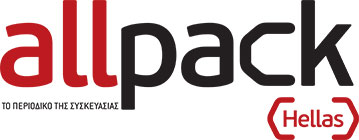Tight supply, fully utilised production capacities and hardly any imports cause uncertainty on the markets / Not all producers dare to accept energy cost surcharges / PET remains extremely scarce
PE: In contrast to September, October began with falling prices for low-density film, but it quickly became clear that skyrocketing energy costs would dominate the scene before very long. By the end of the month, prices were inevitably on the rise again. Supply was tight and will basically remain so. Imports from the US and Middle East are at least easing the situation to a certain extent. Injection moulding material is also very short. Production capacities at European injection moulders are completely exhausted, and imports from overseas are still taking a long time to arrive and keeping supplies very short. The situation is also likely to remain precarious with C6 and C8 film because the agricultural sector, a major customer for these grades, is still holding back with its orders. Numerous farmers are not prepared to submit to price escalation clauses but are speculating on better prices at the beginning of the year. This is also clearly reflected in demand. With EVA, the misery is the same as it was last month: the market is empty – completely empty. Prices are rising across the board. If no material is available, there is nothing to process. At the moment, there is no sign of any change to this disastrous situation.
PP: For the most part, producers were able to pass on the EUR 25/t higher cost of C3 only to buyers of injection moulding grade PP in October 2021. For the other grades, the soft demand from the automotive sector and non-automotive markets such as white goods and household appliances was a hindrance. High energy costs caused lively debates, for which individual suppliers wanted to impose a special surcharge – with only limited success so far. The issue, however, is not off the table and will inevitably spark new discussions in November. Even without this, converters in any case should be prepared to pay more, as the November C3 reference was fixed EUR 95/t higher. In view of the reticent demand, it doesn’t seem all that likely that producers will succeed in passing on this back-door increase in full either.
PVC: The European PVC market is in danger of becoming overwhelmed. The supply situation remains exceedingly tight in October, with no end to the price rises and the first customers threatening to turn their backs on the material. A number of municipalities have already announced that they will be switching back to concrete instead of PVC pipes in the future, due to the dramatic cost situation for infrastructure projects such as sewer renovations. And other investment projects – whether funded by public money or by private consumers – have been postponed altogether. All these are fatal signs for the precarious, hoped-for economic recovery following the pandemic. Additional plant maintenance is likely to keep the supply situation tense. Plant production-rates have shrunk as low as just 70%. Imports from North America and Asia are also lacking everywhere. Despite the tight situation, it has proved possible to honour contract agreements at the lower end. The construction industry continues to be the main driver of demand with no drop in its robust level of orders. Demand from export markets similarly remains high, with prices of USD 2,400/t to USD 2,500/t being paid already. Further cost increases are to be expected for blends. These are being triggered not only by the PVC base material but also by additives, titanium dioxide and plasticisers. The fact that the authorities are now increasingly looking into the environmental impact of individual additives is similarly causing unrest in the market and driving up prices.
Styrenics: In October 2021, styrenics prices trended slightly upwards. Once again, the styrene reference, which rose EUR 23/t at the start of Q3, served as a guide. Despite ABS and EPS still being undersupplied, producers contented themselves with increases that were only slightly above the cost changes to account for the already very high price level; as for polystyrene, restrained demand thwarted any bolder calls for premiums. The overall picture for the past months, however, did not change in October – while PS prices are now well below the all-time highs of May, quotations for EPS and ABS remained at very high levels just below their previous record values in the spring. This trend should be broken in November: strongly increased SM spot prices are heralding a triple-digit hike in the styrene reference (the contract was not yet available at press time). In addition, there’s the issue of increased energy costs, for which individual suppliers have already announced an equally hefty special surcharge. Against this backdrop, it cannot be ruled out that prices will be pushed to new record highs – at least in the case of EPS and ABS.
PET: “Things don’t happen as planned, and certainly never according to your expectations” – the developments in Europe’s PET markets in October 2021 can be summed up in this simple sentence. While things seemed relatively calm at the end of September, events occured rapidly soon after. Midway through the month, it became clear that the cost of both raw materials and energy was skyrocketing. No one had been thinking about imports for a long time now. Then came more bad news from Poland, where production was floundering again. Supply from European producers is becoming exceedingly tight. Those who had concluded contracts earlier on in the month got by with lower double-digit increases in some cases, while clear triple-digit hikes were the rule, as of midway through the month. Demand, which had been running at more of a moderate low-season level until then, followed with a parallel, panic-driven upsurge. Forecasts are extremely uncertain at present. No one knows how the global markets and conditions will develop. All too frequently, assumptions have had to be thrown out the window, in the wake of the pandemic. While a collapse of notations in the logistics or energy sector would seem unlikely, it is, of course, always feasible – in the same way as an even greater increase could come about, despite this being scarcely imaginable. The situation is likely to remain extremely tense, however, with virtually no improvement to be expected before the end of the year.
For more than 35 years, PIE has been an invaluable source of information for European plastics industry decision makers – a quick, yet in-depth look at the development of plastics markets and polymer prices. Available online 24/7 and as a printed newsletter twice a month. To read the entire report, go to www.pieweb.com and sign up for a 48-hour free trial!
























